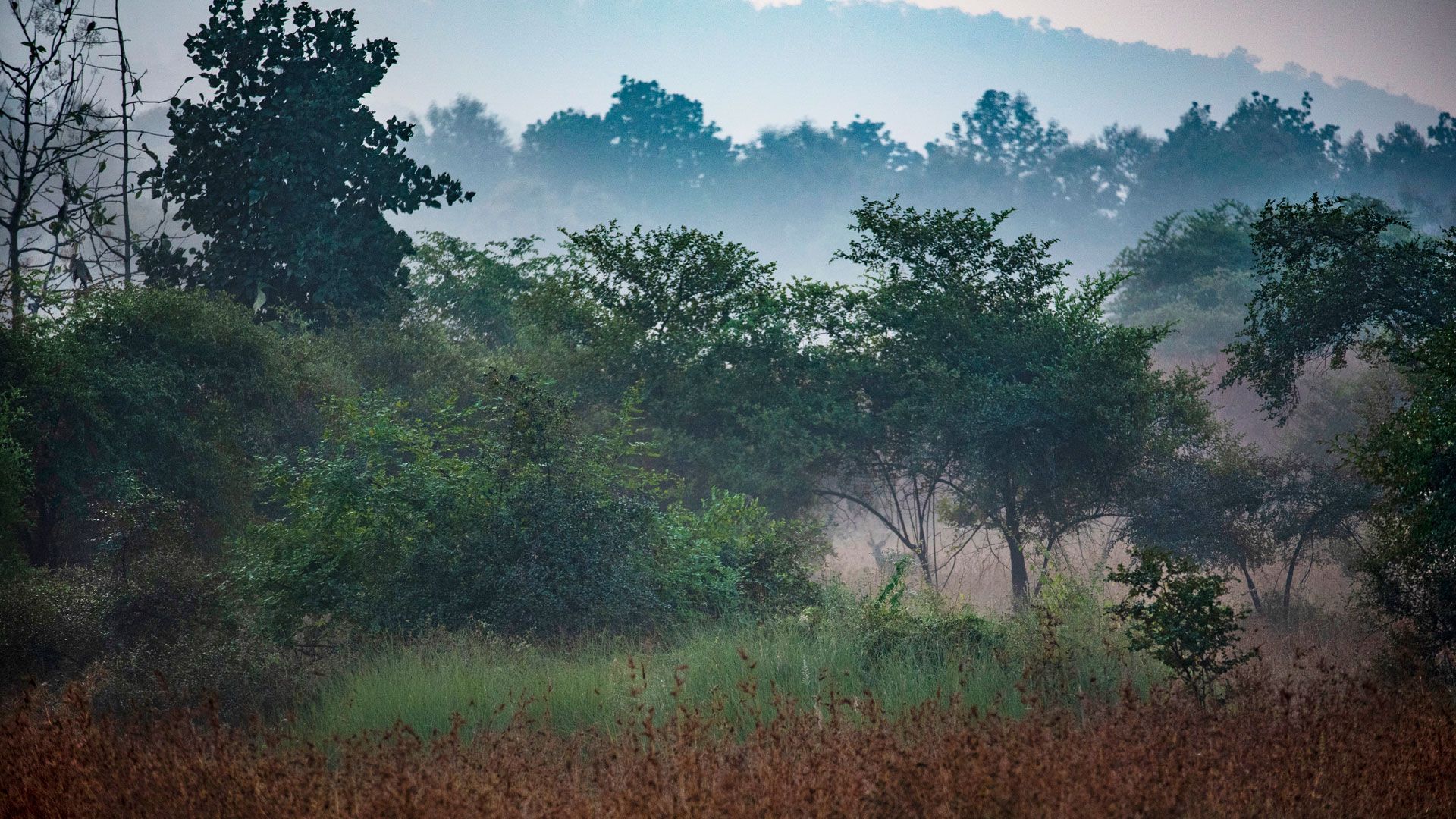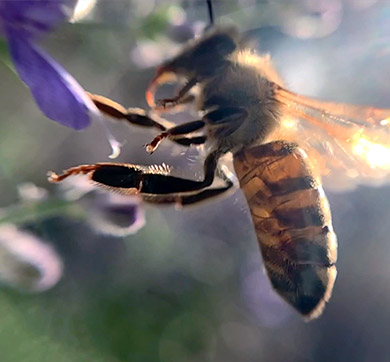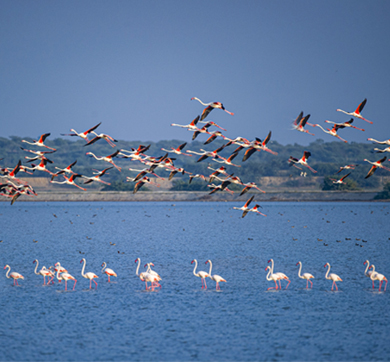December 2022 | 2132 words | 8-minute read
Forests are the lungs of the world. And if there is one thing that the pandemic has shown us, it is how essential lungs are to survival. In the post pandemic world, it is ever more crucial to protect our green cover, and the Tata group has been consciously addressing this over the years across companies and geographies.
Just like robust supply chains in business, where each stakeholder’s value is upheld, forests too have their own interdependent supply chains or ecosystems. A forest only flourishes when its interlinked biodiversity thrives optimally. A disruption anywhere in this interlinkage throws the whole chain off balance, impacting the environment at large. Taking cognizance of these delicate relations in the natural world, the Tata group has, as individual companies and through collaborations, done their bit and more — via conservation work, translocating and repopulating extinct species, afforestation and reforestation initiatives — to ensure that forests live, breathe and prosper.
Revival of the rainforests
The Tata Coffee plantations, covering an area of 12,800+ hectares, located along the Western Ghats in Southern India, find themselves in a unique setting. Recognised as one of UNESCO’s 10 global biodiversity hotspots, the estates are surrounded by sanctuaries and national parks. Within this eco-universe, the Anamalai hills across the Valparai landscape are of specific interest for their lush green rainforest ecosystems, with 3,049 native species of flora, 496 wildlife species and 396 protected species.
Since 2005, Tata Coffee, in partnership with the Nature Conservation Foundation (NCF) and with the support of indigenous tribes and their knowledge, has protected and restored 18 fragmented rainforest segments in the Anamalai Hills. These are home to endangered species such as the lion-tailed macaque and great hornbills among others. “These rainforest fragments are extremely important for conservation of native biodiversity. They also play a key role in maintaining the ecological integrity of the landscape on which businesses and people depend. Partnerships like those we have with Tata Coffee can facilitate wildlife conservation and people-wildlife coexistence,” observes Divya Mudappa, scientist, NCF.
Tata Coffee, in partnership with the Nature Conservation Foundation (NCF) and with the support of indigenous tribes and their knowledge, has protected and restored 18 fragmented rainforest segments in the Anamalai Hills.
Conservation work includes documentation of the biodiverse species, ground verification to record current numbers and reintroduction of native plants in a phased manner over an area of 5 hectares. Adopting a science-based approach, a nursery for rainforests — with 20,000 saplings representing more than 120 native species — was established within the area. More than 10,000 saplings of 105 native trees have been planted since 2006 as shade trees in the coffee and cardamom fields, attracting a variety of birds who make these their habitat.
The resultant rich flora also becomes important habitat for pollinators like bees who nest in tree holes. “Bees and trees are interdependent and have been perfecting their relationship for over 50 million years,” shares Dr P Kurian Raphael, head, Research and Development, Tata Coffee. Working in collaboration with the Central University of Kerala in an ongoing project, the team at Tata Coffee has introduced hundreds of boxes of honeybees in selected sections of the estates over the past two years. These fill the gap caused by the absence of natural pollinators like the migratory giant honeybees whose migration patterns and population have been severely altered due to erratic summer rain and flowering patterns — fallouts of climate change.
The conservation effort also extends to water, truly the wellspring of all life in a forest. Today, the Western Ghat forests, highly valuable for attracting rain and the source of many rivers, face deforestation and encroachment, compromising rainfall and altering the course of rivers. Tata Coffee has partnered with the Water Literacy Foundation for the natural restoration of the hydrological balance of ecosystems in these areas by deploying the ‘lake-in-lake’ model. A unique recharge structure is placed in the lakes to facilitate both direct and indirect percolation in all four layers of the soil and for the replenishment of groundwater.
Together, all of these efforts not only augment the process of reforestation, but also help reduce conflict between man and wildlife, ensuring a peaceful co-existence.
The forest – home, haven, sustenance
A few hundred kilometres north of the Anamalai Hills are the jungles of central India, which are home to a large number of India’s tiger population. The Indian Hotels Company’s (IHCL) Taj Safaris, which operate four safari lodges in this region, has repeatedly stepped up to support the restoration and preservation of the natural habitat.
Over the years, the Taj Safaris team has undertaken scientific and meticulous steps to protect, preserve, and conserve the acreage of wilderness in Pashan Garh, Panna. From restoring the original natural habitat in a sustainable manner by the removal of alien (invasive) species of plants and afforestation of native plant species, to prevention of wild jungle fires and facilitating ground water recharge, these efforts over the years have shown heartening results. The building of one large and six small check dams has provided a total holding capacity of 1,342,522 gallons of rainwater annually, while over 80 acres of the 165 acres are now free of the invasive plant species lantana.
When Panna lost its tiger population to poaching in 2009, the forest department ran a tiger relocation programme. A crucial aspect that needed to be addressed for the success of this was the inclusion of the Pardhis, a tribal community that had long carried the tag of being poachers. Taj Safaris partnered with the Last Wilderness to create the ‘Walk with the Pardhis’ initiative in 2018, which not only gave the community a chance to shed their criminal identity but also an alternate livelihood to sustain them. The Pardhis were trained to put their exceptional tracking and knowledge skills to better use and lead nature trails within the forest for tourists. Today, with three batches having received expert training via this programme, they have found a way to sustain themselves as well as the forest ecology. The tiger population at the Panna national park now stands at 50+.
Taj Safaris also played a pivotal role in the Gaur Relocation programme, a historical re-introduction programme under the aegis of the forest department of Madhya Pradesh. There was a small population of about 38 gaurs or the Indian bison, the largest herbivore species in the country, in Bandhavgarh National Park in 1990. The number declined steadily, coming down to 30 animals in 1995. Post this, no herd was seen either in the national park or the surrounding areas. The local extinction of this species was a blow to conservation as well as the sanctity and balance of the forest ecosystem.
The project to reverse this extinction was a first-of-its-kind initiative in India. Specialised technical experts, including scientists specially flown in from South Africa, were brought in to carry out a translocation of this scale. This is where volunteering efforts of naturalists and scientific expertise from Taj Safaris helped
The Tata group supported the project in other ways, too. IHCL funded it, while Tata Motors provided customised trucks for transport of the animals. 44 gaurs were relocated from Kanha to Bandhavgarh in two batches between December 2010 and January 2011. As per the last census, the population now stands between 120-140 gaurs. This successful reversion of local extinction has gone on to become a model for other wildlife translocation programmes across the country.
“Community development and conservation of wildlife are the core values of Taj Safaris." - Kanhai Kapoor, Associate Vice President, Taj Safaris.
“Community development and conservation of wildlife are the core values of Taj Safaris. Whether in a direct way, like in the case of the gaur relocation, or through supporting tribal communities like Pardhis, Baigas and Gonds in the region, the more they benefit from tourism, the lesser they depend on forest resources,” explains Kanhai Kapoor, Associate Vice President, Taj Safaris.
Replenishing nature
As a leader in its field, sustainability and biodiversity conservation are essential to how Tata Steel runs its business. Though its journey of being environmentally conscious is older than its first steel ingot, the company’s engagement with the International Union for Conservation of Nature (IUCN) in 2013 gave it a more formal structure. IUCN surveyed Tata Steel’s locations and made a plan for biodiversity management to help reduce and restructure the company’s footprint on its surrounding ecology.
“Tata Steel is the first company in India to have a biodiversity policy and is committed to ‘no net loss of biodiversity’ through the conservation, enhancement, and restoration of natural ecosystems in its areas of operation”, shares Sanjiv Paul, Vice President, Safety, Health & Sustainability, Tata Steel.
“Tata Steel is the first company in India to have a biodiversity policy and is committed to ‘no net loss of biodiversity’" - Sanjiv Paul, Vice President, Safety, Health & Sustainability, Tata Steel.
One such project includes afforestation of the areas around the company’s mines in Noamundi, Jharkhand. The restored 126 hectares is today a habitat for local birds and animals. Locals also use the regenerated forests as a source of livelihood, extracting traditional medicinal plants, thus minimising the impact on the other natural forests.
The company has also committed to avoiding acquisition of properties whose development may result in loss of critical habitat for species with special conservation status. It has also actively worked with several organisations, engaging employees and local communities through awareness programmes and workshops, to accelerate its efforts in sustainability and conservation.
Together we triumph
Working together with the Forest Department of the Government of Maharashtra (GOM), Tata Power has carried out extensive afforestation drives across its six hydro catchment areas of Maval and Mulshi near Pune that have an ambitious annual target of planting 9.5 lakhs of saplings during monsoons.
“The area receives heavy rainfall during monsoons, which leads to soil erosion. Afforestation also helps in reducing soil erosion”, says Vivek Vishwasrao, Horticulturist & Biodiversity Expert, Tata Power.
Back in 1986, Tata Power aerially seeded an area of 6,000+ hectares with over a hundred tons of native tree species
This has been achieved through annual pre-monsoon indigenous tree plantation drives since 1979; 200 lakh saplings and seeds have been planted over the past four decades. In 1986, the company also aerially seeded an area of 6,000+ hectares with over a hundred tons of native tree species.
Tata Power has optimised the impact of this through initiatives like Tree Mittra and Greenolution. While the former engages employees and their families in tree plantation, the latter also extends to local communities, students, and the forest department. As part of Greenolution, students are also educated in augmenting plant survival rates. In turn, these areas have not only become rich biodiversity spots that attract a wide range of flora and fauna but have also been successful in supporting locals with forest-based employment resources like medicinal plants.
Tata Power has also teamed with its knowledge partner ELA foundation in an ongoing study to improve the green cover, monitor biodiversity and map carbon sequestration through GIS surveys in the hydro catchment areas.
Bringing alive the Atlantic
Depletion of forests is not any one country’s problem; it is a global phenomenon. The Atlantic Forest, stretching along the Atlantic coast of Brazil, too was once a dense forest characterised by high biodiversity and rare native species. It has now been overrun in large parts by pasture lands. Since Jaguar Land Rover (JLR) began its operations in Brazil in 2015, it has adopted 2.5 hectares of Atlantic Forest as a Permanent Protected Area (PPA).
It also replenishes the land with trees that die. Raising awareness on forest conservation through leaflets, signage and face-to-face communication with employees internally, the company collaborated externally with regulatory bodies like INEA (the environmental regulator) and other departments to donate and plant more trees. Today, the total count of trees planted has reached a resounding 4,500 — a milestone in JLR’s journey to touch the 10k mark by 2026.
JLR has also leveraged its global reach to provide its vehicles to support the protection of endangered species by facilitating access to remote terrains.
JLR also supported a local school’s agroforestry project by partnering with NGO Toré Institute. In line with the Sustainable Development Goals, the children were introduced to sustainability by using native seedlings for forest redevelopment, while being given an interdisciplinary innovative approach to education.
“There are several positive impacts we expect to achieve. One of them is to bring the area close to its original landscape and as a result, bring back the biodiversity common in Atlantic forestry. Another important point is that these trees will support, albeit in low scale, our decarbonisation plan in the long term,” says Marcos Arezo, Sustainability & Open Innovation Manager, JLR.
In addition, JLR has also leveraged its global reach to provide its vehicles to support the protection of endangered species by facilitating access to remote terrains. Tusk, a British Conservation initiative active in wildlife conservation in Africa, tested a specially camouflaged prototype of the new Defender in 2019, using it to track and monitor lion numbers across the Borana Conservancy in Kenya, where “…(it) took everything in its stride, from deep river wading to climbing rocky trails”, as Charles Mayhew, CEO, Tusk put it.
By casting a wide net that pulls together its various companies and their multi-pronged efforts, the Tata group is harnessing the power of many towards one goal – that of protecting as much green cover as possible and ensuring a more sustainable world for future generations.
- Tejal Pandey
































